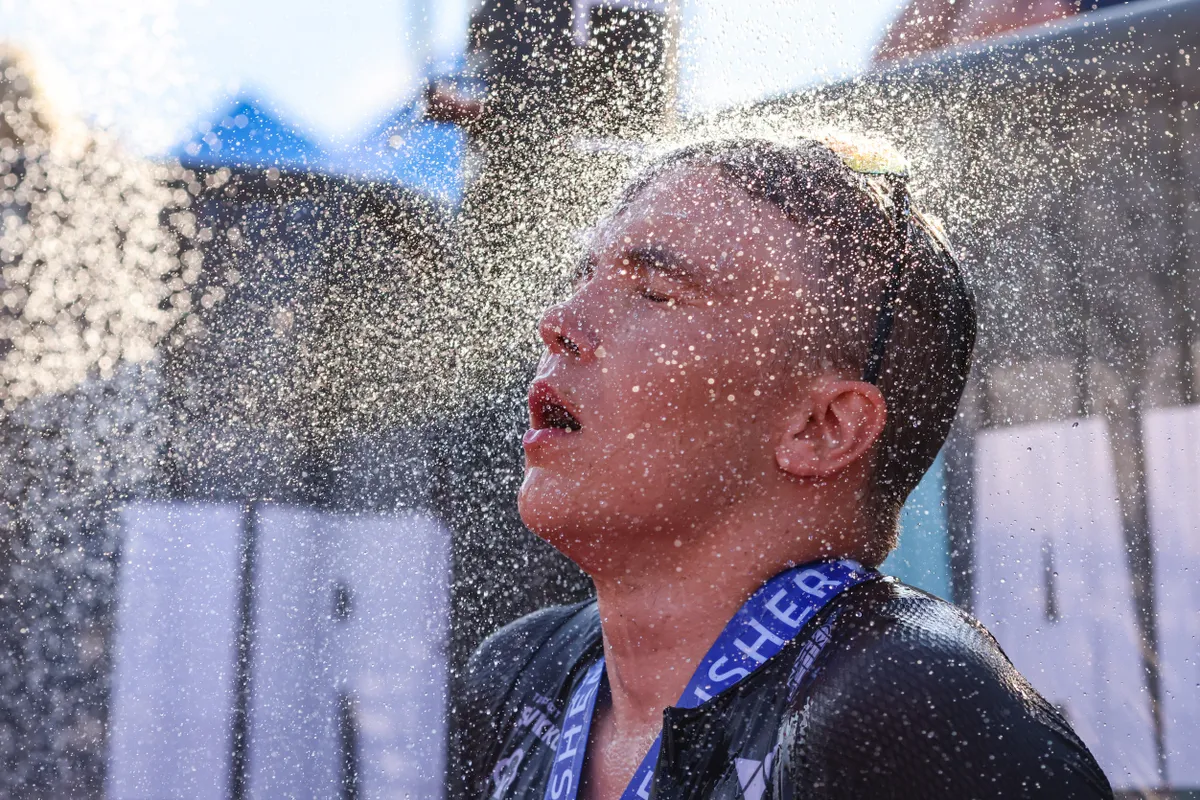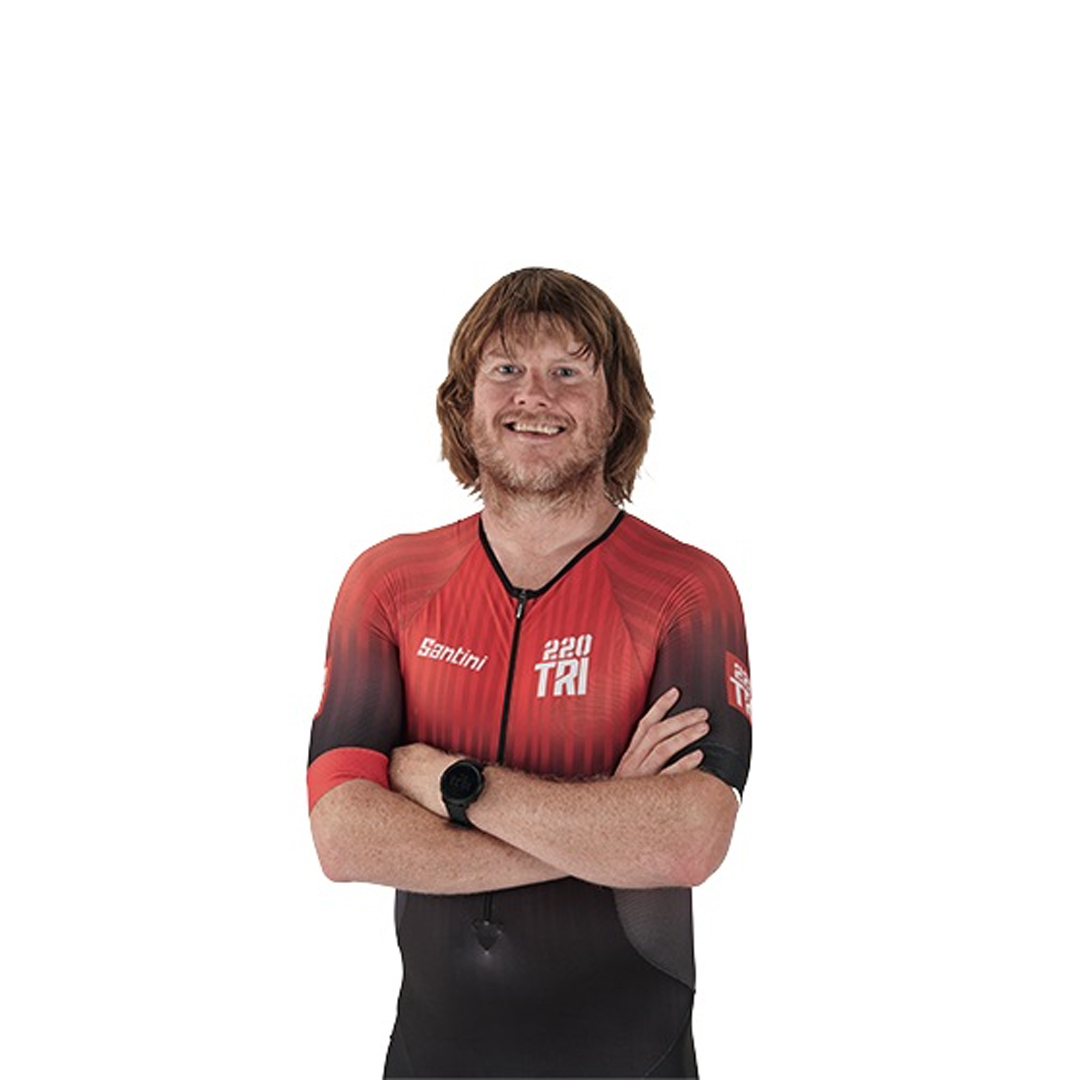The term ‘marginal gains’ – or, the unedited version, ‘the aggregation of marginal gains’ – is a term that was popularised by Team Sky, which was stolen from British Cycling, which, if the story’s true, was probably stolen from former England Rugby Union Coach Clive Woodward. (Who more than likely borrowed it from someone else.)
Whatever you call it and wherever it’s derived from, the well-known idea is that you enjoy myriad small wins for one big win. When it came to Team Sky, those small wins included sleep kits, warming down on turbo trainers and fasted sessions.
For you the triathlete, well, you’ll have to read on in search of minor multisport improvements.
Before then, we implore you to not sprint before you can jog; in other words, before actioning the following, make sure your maximal foundations are in place.
This strong base should cover the full gamut of tri performance including training, gear and nutrition.
To that end, the biggest improvements will come from consistent training; a mix of long, slow sessions and short, high-intensity efforts – an 80/20 mix is a good start; a professional bike fit’s one of the best expenditures for more speed and a reduction in injury; your wetsuit must be neither too loose nor too tight but just right; and ensure that 80% of your nutrition is good with 20% treats.
Tick those off and you’ll be ready to sharpen your race form further with these marginal gains. Prepare to shift into the next level of performance…
Keep your clothing slick
A recent visit to Vorteq Sports in Silverstone highlighted the importance of form-fitting clothing on performance. (Vorteq Sports is an aerodynamic company who focus on human performance and apparel. In the past, they’ve worked with Lucy Charles-Barclay and Reece Barclay.)
“A significant amount of watts can be lost by things like flapping jackets,” applied sports scientist Jamie Pringle told us. So, ensure your tri-suit flows nicely around the contours of your body.
Vorteq also highlighted the aerodynamic gains of smoothing out your legs, so maybe start cycling and running dressed in compression socks. Or shave!
Include fish oil in your diet
Fish oil could be your secret to race success.
Dopamine’s better known as the happy hormone but it also plays an integral role in the thermoregulatory centre of your brain.
It’s why changes in dopamine concentrations have been shown to affect core temperature regulation during exercise with studies showing a performance improvement over 25°C with higher dopamine levels.
The problem is it’s synthesised in the body, so you’ll need to consume foods that you’ll assimilate to produce dopamine. These include the amino acids L-theanine and tyrosine, plus fish oil.
Talk yourself fast
Numerous studies have shown that positive feedback stimulates better performance by boosting confidence – something appreciated when you’re 5hrs in and a hill awaits.
The nuances of self-talk and visualisation could absorb a feature in itself but, for now, heed the words of sports psychologist Russell Martindale.
“It’s more beneficial to think about what you want to be doing rather than what you want to avoid,” he says. “That means if you’re looking to corner at speed, focus on a good, fast entrance and exit in and out of the apex, rather than letting thoughts about what you should avoid enter into your head.”
Positivity equals peak performance.
Pick the right tyres
Your tyres are arguably the most underrated part of your bike set-up but, being the only contact point between you, your bike and tarmac, they’re arguably the most important. So what strip of rubber to go for?
When it comes to seeking optimum speed, the thinking used to be that narrower was better. Over the past couple of years, however, things have gone the other way with some riders even using 28mm.
And riders will often use lower tyre pressures – even down to around 80-85psi. It can feel like you have a flat but you still cover the road quickly. It helps aerodynamics, too, improving airflow where wheel meets tyre.
Buy a pair of triathlon laces
The simplest, most affordable marginal gain you can bag is a pair of triathlon laces. Whether they’re Lock Laces or elastic laces, the principle’s the same: to banish awkward and cumbersome knotting in favour of a swift tug and clamp. Prices start as low as £5.99.
Avoid saddle sores
Many of us are still utilising the likes of Zwift for training, which isn’t a bad option as you can more easily stick to power zones and there’s less chance of a last-minute knock.
Mind you, indoor training’s not without its pitfalls, namely saddle sores. The higher temperatures due to lack of airflow means your crotch can heat up faster than Kristian Blummenfelt out of T2, so use a fan and angle it at your groin.
It’ll reduce sweat, one of the major causes of saddle sores.
Eat protein every day
Tapering, where you reduce training volume in the build-up to your key race, is important to flush out fatigue in search of optimum speed.
The last few days prior to your big day’s also a time for increasing good-quality carb consumption to ensure your glycogen stores are at their peak come the starting gun. But don’t neglect protein.
Your body demands protein on a daily basis for simple muscle repair and rebuild. Hence, you can and should eat a small serving of low-fat proteins, such as poached eggs, yoghurt, turkey or chicken, beans or lentils, with your carboloading meals.
Around 1g protein per/kg bodyweight should be sufficient for muscle repair.
- The best sources of protein for vegan and vegetarian triathletes
- Best protein powder for runners in 2022
Acclimatise to a new PB

If you’re racing in a hot country, you must acclimate to better physiologically and mentally prepare yourself for the extra strain. To do this you need to elevate your core temperature by 1-2°C for 60-90mins over a period of four-10 days.
This will elicit a lower resting core temperature, greater blood plasma volume and an increased sweating rate – all favourable adaptations.
So it’s time to buy a fan heater for your turbo sessions and close the door. A 20min hot bath after an indoor session’s also a proven acclimator.
Set two alarms on race morning
Triathlons start early; in fact, if you’re facing an Ironman or long-distance race, you can be up as early as 3am. That’s why you should use two alarms.
They provide greater peace of mind than one. You should also pre-load the race-start address into your GPS unit and, if you’re staying in a hotel, have one bag for triathlon gear and one for leisure.
You don’t want to be enjoying a celebratory post-event pint down the Dog and Duck smelling of a dog and duck.
Know your B vitamins
Two-time Ironman world champion Patrick Lange is just one high-profile triathlete who’s vegetarian, putting to bed the notion that you won’t enjoy sufficient nutrients to race long and fast without meat.
However, if you are, or are thinking of becoming, a vegetarian or vegan, think about taking a vitamin-B12 supplement.
B12’s the most common micronutrient deficiency for vegans and vegetarians because it isn’t found in plants and can’t be synthesised by the human body from other sources.
It’s essential for normal functioning of the nervous system and the production of healthy red blood cells.
In terms of vitamin supplements, look for those that contain methylcobalamin, the active form of vitamin B12, which is assimilated more easily into the body.
Top image credit: Joern Pollex/Getty Images
